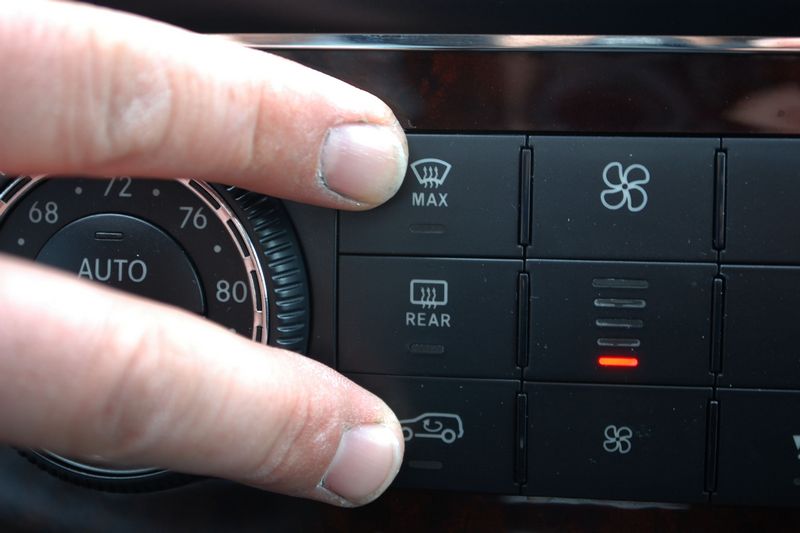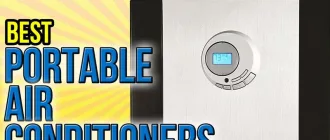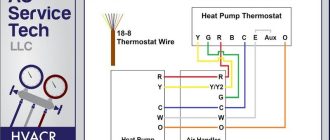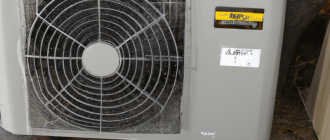
How do I reset my AC device?
Is your air conditioning unit acting up? It’s frustrating when your AC machine isn’t working properly, but before you call a professional, try resetting your device. Resetting your AC device can often resolve common problems and save you time and money.
When you reset your AC, you are essentially giving it a reboot. Just like any other electronic device, sometimes an AC unit can get stuck or encounter an error that requires a reset to fix. By resetting your AC, you are restoring it back to its default settings and allowing it to start fresh.
But how do you reset your AC device? The process will vary depending on the make and model of your machine. However, there are some general steps you can follow to reset most AC units. First, locate the power source for your AC unit and turn it off. You may need to unplug it or flip a switch on your circuit breaker. Wait for a few minutes, then turn the power back on. This should initiate the reset process.
If you’re still experiencing issues after resetting your AC device, it may be time to call a professional. A certified technician will be able to diagnose and fix any underlying problems that may be causing your AC to malfunction. Don’t let a faulty AC ruin your comfort. Follow these simple steps to reset your AC device and enjoy a cool and comfortable living space once again.
Resetting Your AC Device: A Troubleshooting Guide
If you’re experiencing issues with your AC unit, performing a reset can often solve the problem. By resetting your air conditioner, you are essentially rebooting the machine, allowing it to start fresh and potentially resolve any issues it may be experiencing.
To reset your AC device, follow these simple steps:
- Turn off the power: Locate the power switch for your AC unit and switch it off. This will ensure that the unit is completely shut down before proceeding with the reset.
- Wait for a few minutes: Give your AC some time to fully power down. Waiting for a few minutes will help clear out any residual power and give the system a chance to reset.
- Turn the power back on: After waiting, switch the power back on by flipping the power switch or turning on the circuit breaker. This will initiate the reboot process and start up the AC unit.
- Set your desired settings: Once the AC unit has powered back on, set your desired temperature and cooling options using the control panel or remote control.
- Monitor for any changes: Allow the AC unit to run for a few minutes and observe if the issues you were experiencing have been resolved. If the problems persist, you may need to consult a professional technician for further assistance.
Resetting your AC device is a simple troubleshooting step that can often resolve minor issues with your air conditioner. By following these steps, you can give your AC unit a fresh start and potentially avoid the need for expensive repairs or replacements.
Check Power Connection
Before attempting a reset on your AC unit, it is important to first check the power connection. Ensure that the AC device is properly plugged into a power outlet that is functioning properly. You can do this by testing the outlet with another electronic device or by plugging the AC machine into another outlet.
Power interruptions or loose connections can cause the AC unit to malfunction, preventing it from operating efficiently or even turning on. Make sure that the power cord is securely plugged into the AC machine and that there are no visible damages or frayed wires.
Tip: It is also recommended to check if there is a power switch on the AC unit and ensure that it is turned on. Some air conditioners have a power switch that needs to be manually activated for the unit to receive power.
If you have verified that the power connection is secure and the AC unit still does not turn on or operate properly, you may need to proceed with a reset or contact a professional technician for further assistance.
Inspect the Thermostat
One of the first steps you should take when troubleshooting your AC unit is to inspect the thermostat. The thermostat is an important component of your air conditioner as it controls the temperature and cycles of your machine. If the thermostat is not functioning properly, it may cause your AC unit to malfunction.
Start by checking the batteries in your thermostat. If the batteries are dead or low, replace them with fresh ones. It’s also a good idea to clean the contacts where the batteries go in order to ensure a good connection.
Next, check the settings on your thermostat. Make sure the temperature is set to a level that will activate the cooling system. If the temperature is set too high, the air conditioner may not turn on at all. It’s also a good idea to check the fan settings to ensure they are set correctly.
If the thermostat seems to be in working order but your AC unit is still not functioning properly, you may want to consider resetting the thermostat. To do this, simply reboot or reset the thermostat by turning it off for a few minutes and then turning it back on. This can sometimes resolve any glitches or errors that may be causing your air conditioner to malfunction.
Inspecting the thermostat is an important step in troubleshooting your AC unit. By ensuring that it is functioning properly and adjusting the settings as necessary, you can often resolve issues with your air conditioner without the need for professional assistance.
Clean or Replace Air Filters
One of the simplest and most important steps you can take to keep your AC unit running smoothly is to clean or replace the air filters regularly. The air filters are responsible for catching dust, dirt, and other debris in the air, preventing them from entering your AC unit and potentially causing damage.
Over time, the air filters can become clogged with this debris, restricting the airflow and reducing the efficiency of your AC unit. This can lead to decreased cooling performance and increased energy consumption. To avoid these issues, it is recommended to clean or replace the air filters every 1-3 months, depending on the usage and the environment in which the AC unit operates.
To clean the air filters, you can use a vacuum cleaner or gently wash them with mild soap and water. Be sure to let the filters dry completely before reinstalling them. If the air filters are damaged or too dirty to be cleaned, it is best to replace them with new ones. Most AC units have removable and replaceable air filters, making this process quick and easy.
In addition to improving the performance of your AC unit, clean or new air filters can also contribute to better indoor air quality. They can help reduce the amount of allergens, dust, and other pollutants circulating in your home, creating a healthier and more comfortable environment for you and your family.
Remember, regularly cleaning or replacing the air filters is a simple yet effective way to maintain the efficiency and longevity of your AC unit. It is a small step that can make a big difference in the performance and overall comfort of your home.
Examine Outdoor Unit for Debris
One of the simplest steps to take when troubleshooting an AC device is to examine the outdoor unit for debris. Over time, leaves, dirt, and other types of debris can accumulate around the unit, blocking the air flow and preventing it from functioning properly.
To reset your AC and ensure optimal performance, follow these steps:
- Turn off the power to your AC unit. This can usually be done by flipping the appropriate circuit breaker in your electrical panel.
- Carefully remove any visible debris, such as leaves or branches, from around the unit. Use gloves if necessary to protect your hands.
- Inspect the unit for any signs of damage or obstructions. Look for bent fins, clogged coils, or anything else that may impede air flow.
- If you notice any significant damage or obstructions, it may be necessary to call a professional technician to repair or replace the affected parts.
- Once you have cleared away any debris and checked for damage, turn the power back on. Wait a few minutes for the device to reset and reboot.
- Test your AC unit to ensure it is functioning properly. Adjust the temperature settings and listen for the sound of the air conditioner kicking in.
By taking the time to examine the outdoor unit for debris, you can help prevent potential issues and keep your AC running smoothly. Regular maintenance and cleaning can extend the lifespan of your device and improve its overall efficiency.
Reset Circuit Breaker
If your AC device is not working properly, one of the troubleshooting steps you can try is resetting the circuit breaker. The circuit breaker is responsible for protecting the electrical circuit by tripping and interrupting the current flow when there is a fault or overload.
To reset the circuit breaker of your AC conditioner, follow these simple steps:
| 1 | Locate the circuit breaker panel in your home. |
| 2 | Open the circuit breaker panel door. |
| 3 | Find the circuit breaker that corresponds to your AC unit. |
| 4 | If the circuit breaker is in the “Off” position, reset it by switching it to the “On” position. |
| 5 | Wait for a few seconds to allow the circuit breaker to reset and stabilize. |
Resetting the circuit breaker can help to reboot your AC device and resolve any issues that may have caused it to malfunction. If resetting the circuit breaker does not solve the problem, it is advisable to consult a professional technician to diagnose and repair your AC unit.
Check for Faulty Wiring
If you’re having trouble resetting your AC device, the issue could be due to faulty wiring. Faulty wiring can prevent the proper functioning of your AC unit and may require professional assistance to fix.
To check for faulty wiring, follow these steps:
- First, ensure that the AC machine is fully switched off and unplugged.
- Next, carefully inspect the power cord and plug for any signs of damage, such as frayed wires or loose connections. If you notice any issues, do not attempt to repair it yourself; instead, contact a qualified technician.
- Check the electrical panel and circuit breaker box to see if any of the switches have tripped or if there are any blown fuses. If you find a tripped switch or blown fuse, reset it or replace the fuse.
- Inspect the internal wiring of the AC unit. Look for any loose or disconnected wires, and ensure that all connections are secure.
- If you’re not confident in your ability to safely check for faulty wiring, it’s best to contact a professional electrician or HVAC technician for assistance.
Addressing faulty wiring issues can help resolve problems with your AC unit and ensure its proper functioning. It’s important to prioritize safety when dealing with electrical components, so don’t hesitate to seek professional help if needed.
Test the Capacitor
If your air conditioning unit is not working properly and resetting the device didn’t solve the issue, you might need to test the capacitor. The capacitor is an essential component in the AC machine that helps start the motor and keep it running smoothly.
To test the capacitor, you will need a multimeter. First, turn off the power to the AC unit. Then, locate the capacitor, which is usually a small cylindrical object with two or three wires attached to it. Using the multimeter, set it to capacitance mode and touch the multimeter leads to the corresponding capacitor terminals.
If the reading on the multimeter is close to the capacitor’s rated value, the capacitor is likely functioning correctly. However, if the reading is significantly lower or higher than the rated value, it indicates that the capacitor is faulty and needs to be replaced.
Remember to always proceed with caution when working with electrical devices. If you are unsure or uncomfortable with testing the capacitor yourself, it is best to call a professional technician to ensure safety and proper troubleshooting of your AC unit.
Verify Refrigerant Levels
One of the reasons your air conditioning device may not be functioning properly is due to low refrigerant levels. Refrigerant is the substance responsible for cooling the air in your AC unit.
To verify the refrigerant levels in your device, follow these simple steps:
- Turn off your air conditioner and unplug it from the power source.
- Locate the access panel on the unit. This panel is typically on the front or the side of the Air Conditioning machine.
- Remove the access panel using a screwdriver or by following the instructions in your device’s manual.
- Inside the unit, you will find the refrigerant lines. These lines are usually silver and made of metal.
- Inspect the refrigerant lines for any signs of leakage or damage. If you notice any leaks or damage, it is recommended to contact a professional technician to repair or replace the lines.
- Next, locate the sight glass or the refrigerant level indicator. This is a small window or a gauge that allows you to check the refrigerant levels.
- If the sight glass shows clear refrigerant, it means the level is low and needs to be refilled.
- If the sight glass is cloudy, it indicates that the refrigerant level is adequate.
- If you are unsure about the readings from the sight glass, consult your device’s manual or contact a professional technician to perform the refrigerant level check.
Remember, maintaining proper refrigerant levels is crucial for the efficient operation of your air conditioning unit. If you suspect any issues with the refrigerant levels, it is recommended to schedule a professional inspection and refill if necessary.
Clean the Condenser Coils
One important step in resetting your AC unit is to clean the condenser coils. Over time, these coils can get dirty and clogged with debris, reducing the efficiency of your air conditioner. Cleaning the condenser coils can help improve the performance of your AC device.
Here are simple steps to clean the condenser coils:
- Turn off the power to your AC unit. This will prevent any accidents or electrocution.
- Remove any debris or leaves that may have accumulated on or around the unit.
- Use a soft brush or cloth to gently remove dust and dirt from the exterior of the condenser coils.
- Apply a coil cleaning solution to the coils and let it sit for a few minutes.
- Gently rinse the coils with water using a hose.
- Allow the coils to dry completely before turning on the power to your AC device.
Regularly cleaning the condenser coils can extend the lifespan of your air conditioner and ensure its optimal performance. It is recommended to clean them at least once a year or more frequently if you live in a dusty environment.
Remember to always follow the manufacturer’s instructions and safety guidelines when cleaning your AC unit. If you are unsure how to clean the condenser coils or encounter any issues, it is best to contact a professional technician for assistance.
Inspect the Evaporator Coils
One important step in resetting your AC device is to inspect the evaporator coils. These coils are responsible for absorbing heat from the air and cooling it down. Over time, these coils can become dirty and accumulate dust and debris, which can reduce the efficiency of your air conditioner.
To inspect the evaporator coils, you can start by turning off your AC machine and removing the access panel. You may need a screwdriver or a wrench to do this. Once the panel is off, take a close look at the coils and check for any signs of dirt, debris, or damage.
If you notice that the coils are dirty, you can use a soft brush or a cloth to gently clean them. Be careful not to apply too much pressure, as this can damage the coils. You can also use a vacuum cleaner with a brush attachment to remove any loose dirt or debris.
After cleaning the coils, you can put the access panel back on and turn on your AC device. This simple step can help improve the efficiency of your air conditioner and ensure that it is working properly.
Unclog the Condensate Drain Line
One common issue that can cause problems with your air conditioning unit is a clogged condensate drain line. This can lead to water leaking from the unit and potentially damaging your machine or causing it to malfunction. To solve this issue, you can follow these steps to unclog the drain line and get your device back to working properly:
- Turn off your air conditioner and locate the condensate drain line.
- Using a wet/dry vacuum, attach it to the end of the drain line and create a seal.
- Turn on the vacuum and let it run for a few minutes to remove any blockages or debris from the drain line.
- Alternatively, you can use a small brush or pipe cleaner to manually remove any clogs from the drain line.
- Once the blockage is cleared, you can pour a mixture of bleach and water down the drain line to prevent future clogs and kill any algae or mold growth.
- After completing these steps, turn on your air conditioner and check if the condensate drain line is draining properly.
By unclogging the condensate drain line, you can ensure that your air conditioner is running efficiently and prevent any potential damage to your unit. Regularly checking and clearing the drain line can help prolong the lifespan of your device and prevent unexpected breakdowns.
Reboot the AC System
To reset your air conditioner unit, you need to reboot the device. The process of rebooting your AC machine can help resolve many common issues and restore it to its normal functioning. Here’s how you can reset your AC device:
- First, locate the power switch or breaker that controls the AC unit.
- Turn off the power switch or flip the breaker to the “off” position.
- Wait for at least 5 minutes to ensure that the AC system is completely powered down.
- After the waiting period, turn the power switch back on or flip the breaker to the “on” position.
- Allow the AC device to power up and initialize. This may take a few minutes.
- Once the device has rebooted, test the air conditioner to see if the issues have been resolved.
Rebooting your AC unit can often fix minor glitches and restore proper functionality. However, if the problems persist, you may need to consult a professional technician to diagnose and repair any deeper issues.
Contact Professional AC Technician
If you have tried all the previous steps to reset or reboot your AC unit and it is still not working properly, it is time to contact a professional AC technician. While there are many troubleshooting steps you can take on your own, some issues may require the expertise of a trained professional.
A professional AC technician will have the knowledge and experience to diagnose and repair any complex issues with your air conditioning unit. They will have the necessary tools and equipment to properly assess the problem and provide the appropriate solutions.
Attempting to fix the issue yourself or hiring an inexperienced technician can potentially cause more harm than good to your AC device. It can lead to further damage and may void any existing warranty on your unit.
By reaching out to a professional AC technician, you can ensure that your AC unit is in good hands. They will not only fix the immediate issue but also provide any necessary maintenance or servicing to prevent future problems.
To find a reliable professional AC technician, you can ask for recommendations from friends, family, or neighbors. You can also search for local AC repair companies online and read reviews to ensure their reputation and expertise.
Remember, it is important to address any issues with your AC device promptly to avoid discomfort and potential damage. Contacting a professional AC technician will help you restore your air conditioner to its optimal performance and ensure a comfortable environment in your home or office.
Schedule Regular AC Maintenance
Regular maintenance is essential to keep your AC unit running efficiently and to avoid breakdowns. Here are some simple steps to schedule regular AC maintenance:
- Contact a professional HVAC technician to schedule a maintenance appointment for your AC unit.
- Choose a date and time that is convenient for you.
- Ensure that the technician has access to your machine and clear any obstacles.
- During the maintenance visit, the technician will perform a thorough inspection of your AC unit.
- This inspection will include checking the air filters, cleaning the coils, and lubricating any moving parts.
- If any issues are found, the technician will advise you on the necessary repairs.
- Following the maintenance visit, make sure to follow any recommendations given by the technician.
- Consider setting reminders or scheduling regular maintenance visits semi-annually or annually to ensure your AC unit continues to function optimally.
Regular maintenance will not only prolong the life of your AC device but also help maintain clean air quality in your home. Make sure to reset or reboot your air conditioner regularly to ensure its proper functioning.
Q&A:
Why is my AC not turning on?
There could be a few reasons why your AC is not turning on. First, check if the power supply is working by testing it with another device. If the power supply is fine, then check the thermostat settings to ensure they are properly set. Additionally, a tripped circuit breaker or blown fuse can also prevent the AC from turning on. Finally, a faulty motor or compressor could be the issue, which may require professional repair.
How do I reset my AC unit?
To reset your AC unit, follow these simple steps: first, turn off the power supply to the unit by flipping the circuit breaker or disconnecting the power source. Wait for at least 30 seconds, and then turn the power supply back on. This will reset the unit and allow it to restart. If the AC still doesn’t work after resetting, further troubleshooting or professional assistance may be required.
Why is my AC blowing warm air?
If your AC is blowing warm air instead of cool air, there could be a few possible reasons. Firstly, check the thermostat settings to ensure they are set to the desired cooling temperature. The air filter may also be dirty and clogged, obstructing the airflow and causing the air to be warm. Another possibility is a refrigerant leak, which can result in insufficient cooling. If these troubleshooting steps do not resolve the issue, it’s best to contact a professional technician for further diagnosis.
What should I do if my AC is leaking water?
If your AC is leaking water, it may indicate a problem with the condensate drain line or a clogged drain pipe. Firstly, check if the drain line is properly connected and not blocked. Clear any debris or obstructions in the drain pipe. Additionally, ensure that the air filter is clean, as a dirty filter can cause the evaporator coils to freeze and subsequently melt, resulting in water leakage. If these steps do not fix the issue, it’s advisable to consult a professional for assistance.
How often should I clean or replace the air filter in my AC?
It is generally recommended to clean or replace the air filter in your AC every 1 to 3 months. However, the frequency may vary depending on factors such as the environment, usage, and the type of filter being used. If you have pets or live in a dusty area, more frequent cleaning or replacement may be necessary. A dirty or clogged filter can obstruct airflow and decrease the AC’s efficiency. Regular maintenance of the air filter helps improve the overall performance and lifespan of your AC unit.





